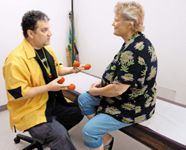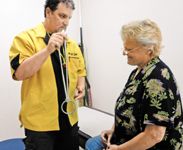Article
Making sense and cents
It's natural for people to worry about that which they do not understand. As learned professionals, our reassurance can go a long way toward soothing our patients.

Key Points

There are 2 good reasons for incorporating patient education techniques into your practice: Doing so helps your patients, and it helps you.

THE 3 PS

Make it practical. Patients can be overwhelmed when presented with a discussion of obscure odds and statistics, as they may encounter during an informed consent discussion. Using practical analogies can make it easier for them to understand. For example, explain that when crossing a busy street, it's always possible to get hit by a passing car. However, if one is cautious and looks both ways, he or she can minimize that risk.

Selling patients on the notion of colonoscopy can be a daunting task. They don't realize just how common colon cancer occurs and that it kills so many. I perform a special close-up card trick for these patients and then explain that the trick was taught to me by one of the greatest close-up bar magicians in the world, a good friend and mentor who passed away last summer. I point to his picture on my wall and note that he died from colon cancer at age 65, having never gone for his recommended colonoscopies. I point out that he probably would have lived another 20 years (knowing his family history) had he gone for his routine colon screenings. In this manner, I've now put a face on the condition, and I rarely have had anyone refuse these screenings since.
Make it "phun!" People tend to retain more knowledge when the learning process is fun. If given the choice between a boring lecture and a humorous one on the same subject, most would opt for the latter. Look at the success of comedy traffic schools if you don't believe me. If you feel comfortable with it, do your best to inject some humor or fun into your discussions. Your patients will pay greater attention to your words and will retain more of what you said.
What tools are available for you? In magic, the simplest tricks are often the most entertaining. Magicians take a simple effect and infuse it with their own personality and creativity, with the end result being (we hope) amazement. Although there has been a push to implement technology such as electronic health record systems to replace the traditional tools of pictures and anatomic models for patient education, I personally still prefer the low-tech approach, trying to find creative and fun ways to use common everyday objects-particularly toys-in addition to the standard anatomic models. I'll also use patient education handouts (for instance, from H. Winter Griffith, MD's excellent Instructions for Patients) that patients can take home to review after our discussions, and I also have a patient education section on my practice's Web site.





